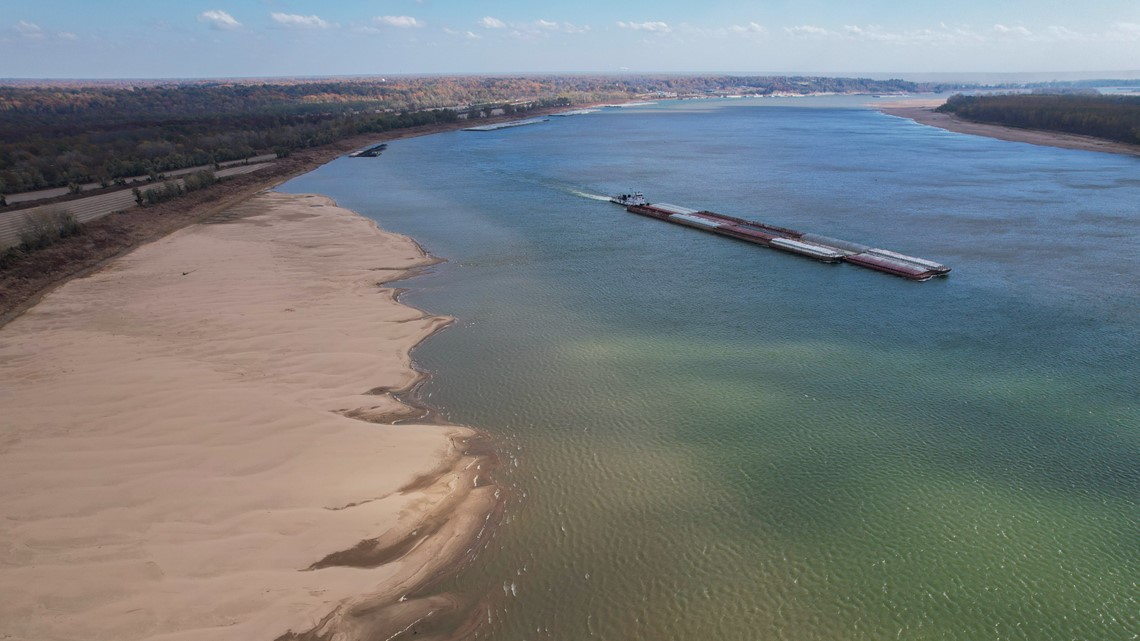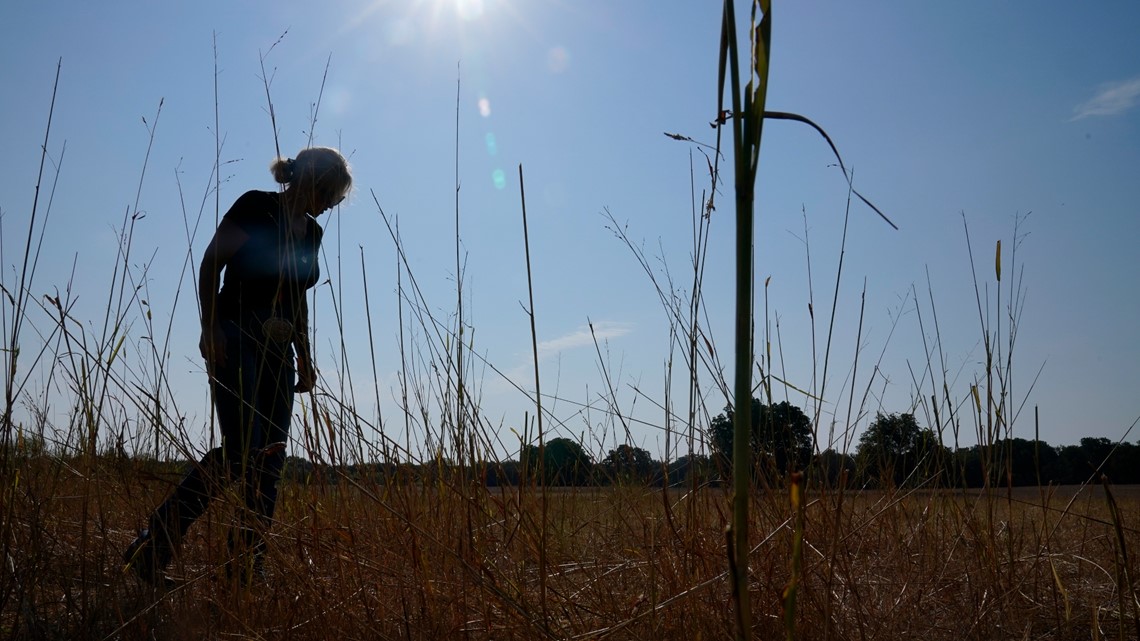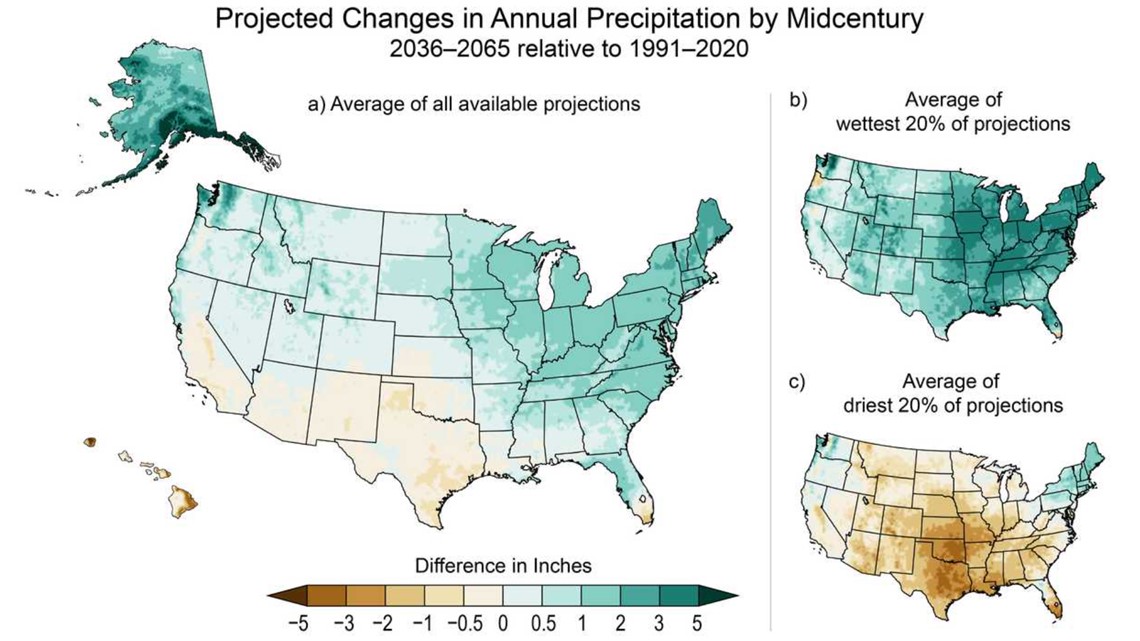WASHINGTON D.C., DC — A major federal report compiled by some of the country’s leading scientific minds underscores more must be done to safeguard American communities from the worst outcomes of the climate crisis, which will affect people unequally as the world warms in coming decades.
Those are some of the broad conclusions contained in the Fifth National Climate Assessment, a labyrinthine, 30-plus chapter report compiled by a contingency of federal agencies and academics. The assessment represents the government’s leading contribution to climate knowledge and is the most comprehensive look into how the country is responding to the climate change to date. NCA5 elaborates in detail how communities experience climate change already and how it could impact Americans moving forward.
While no region in the country will be spared the impacts of climate change, Americans will experience it differently the report cautions. As some regions deal with an increase in water, others may not have enough. Some communities will grapple with an increase in wildfires, others an uptick in pests. The report clarified any real climate solutions need to incorporate a justice component if they are to help the people most affected by climate change.
Grim outlooks we’ve come to expect from most climate reports are duly contained in this one. But the report’s authors made care to note American communities have stepped up as of late, taking action partly through an influx of federal monies earmarked for climate projects. Overall, researchers found states are spending more on climate projects, both for mitigation and adaptation.


"I hate to say it's apocalyptic and positive, but it is both of those two things", said leading climate scientist Dr. Gabe Filippelli, who did not contribute to the report, but is the executive director for Indiana University Environmental Resilience Institute.
Scientists note climate change will cost Americans their lives, and will have an increasingly detrimental effect on their wallets, if policymakers stall in safeguarding communities through climate-resilient infrastructure and centering underserved communities most impacted by a warming world.
The report doesn’t stray far from the cautionary tone contained in a slew of other reports released this year, which highlighted record-breaking heatwaves and billion-dollar disasters experienced by Americans in 2023 alone.
"They're very unequivocal about why this is happening: it's us. It's from the carbon emission that we have from burning fossil fuels. They make that link very clearly", Filippelli said.
As greenhouse gas emissions rise, The Fifth National Climate Assessment reiterates the United States could very well face massive disruptions to critical food systems, and millions of Americans may face possible displacement from disasters or increased threat of diseases, if society remains lackadaisical in implementing strategies that could bring net zero emissions to zero by 2050.
Those changes could include investing in nature-based infrastructure, decarbonizing the energy sector and implementing urban planning and building design that reduce energy demands through more public transportation and active transportation.
And it contains new, yearlong perspectives on climate change by the numbers. Present day levels of greenhouse gasses in the atmosphere are higher than at any time in at least the last 800,000 years, with most emissions occurring since 1970, according to the report. The rate of sea level rise in the 20th century was faster than in any other century. The last 3,000 year and global temperature has increased faster in the past 50 years than at any time in the last 2,000 years, according to the report. A person born in North America in 2020 will experience more climate hazards in their lifetime, although how many depends on the level of future warming, scientists found.
NCA5 authors eschew dictating policy. Rather, White House climate representatives said the report is created to simplify a vast cache of information, so policymakers dictating decisions - people on the frontlines of the climate crisis - can craft climate-smart strategies across many sectors through the takeaways contained in the report. From urban planners in Texas brainstorming how to protect people from extreme heat to water utility managers in Chicago working to assess a changing annual rainfall, White House scientists hope the data will be used by policymakers across industries.
"I certainly will use this to talk about more urgency here in Indiana on mitigating, while reducing, carbon emissions," Filippelli said.


The report is put together by the US Global Change and Research Program, a cohort of 14 federal agencies that includes the Department of Homeland Security, National Science Foundation, US EPA and others.
A law passed by Congress in 1990 mandates the federal government to release a National Climate Assessment, and it is released roughly every five years, with dozens of federal scientists and academics across a range of industries contributing.
The last assessment, released in November 2018, saw scientists contradicting statements made White House officials, who were accused of downplaying the climate crisis to the public at the behest of former President Donald Trump, who declared “I don’t believe it” in a public dismissal of the findings.
"It was released at a time when there was not that emphasis on climate. Not just in climate awareness, but climate action. And that's the good news - that they lay out in this report is that we're seeing hundreds of billions of dollars invested to make our country stronger in the face of climate change," Filippelli said.
The Trump administration notably worked to halt progress on the report and were accused by climate scientists of burying the findings by releasing it on Black Friday. NCA5 marks a decided deviation in that, with scientists largely reiterating the crucial role President Biden’s Inflation Reduction Act and Infrastructure Investment and Jobs Acts have made in the marginal headway American communities have made in implementing climate-smart practices.
"This assessment shows us in clear scientific terms that climate change is impacting all regions, all sectors of the United States — not just some, all. It shows that communities across America are taking more action than ever to reduce climate risks and warns that more action is still badly needed. We can’t be complacent. Let me say that again: We can’t be complacent. We have to keep going," Biden said in a statement about NCA5.
This fifth assessment is also broader in scope than its 2018 predecessor, with additional focus points outlining the impact of climate change on Covid-19 and possible future pandemics, the potential risk to supply chains, and western wildfires. NCA5 includes a chapter on economics, which highlights economic impacts and opportunities associated with climate action, according to the White House. And NCA5 includes a new chapter on social systems and justice, which provides insights into how people understand, experience, and respond in different ways to climate change.
Here are some key takeaways from NCA5
- U.S emissions decreased, but not fast enough
Annual U.S. greenhouse emissions fell 12% between 2005 and 2019, even as the economy and population have grown, the report said. That trend was driven by changes in electricity generation – coal use has declined, while the use of natural gas and renewable technologies have increased. Overall, the report claims the electricity sector saw a 40% drop in emissions
Since 2017, the transportation sector has overtaken electricity generation as the largest emitter, according to the report.
However, it’s not happening fast enough to curtail some of the worst projected outcomes. Emissions would still have to decline by roughly 6% annually to hit UN-sanctioned goals of decreasing global emissions by 1.5 degrees Celsius.
"We know that if we stop emitting carbon at a rate that's greater than it being sucked up - if we just cut down on carbon emissions - we'll stop our temperature change almost immediately. It's not like a runaway train, we can stop this," said Filippelli.
- Extreme events are becoming more frequent, and costing Americans
Scientists highlighted the amount of record-breaking billion-dollar disasters.
“Harmful impacts from more frequent and severe extremes are increasing across the country—including increases in heat-related illnesses and death, costlier storm damages, longer droughts that reduce agricultural productivity and strain water systems, and larger, more severe wildfires that threaten homes and degrade air quality,” the report said.
In the 1980s, the U.S. experience one billion-dollar disaster every four months when adjusted for inflation. Now, Americans experience one every three weeks. Between 2018 and 2022, the U.S. experienced 89 billion-dollar events. Those extreme events cost the U.S. close to $150 billion every year, an estimate the report cautioned did not account for loss of life, healthcare-related costs, or damages to ecosystem services.
Florida, California, Texas, Louisiana and North Carolina experienced the most billion-dollar disasters from 2018 to 2022.
- Water supplies are all threatened in different ways
Water supplies will all be impacted from a changing climate, but how that looks from region to region varies drastically. Some regions will deal with enough water, or too much, and it will fluctuate constantly.
Alaska and northern and eastern regions of the US are seeing and expect to see more precipitation on average, while the Caribbean, Hawai‘i, and southwestern regions of the US are seeing and expect to see less precipitation.
Heavier rainfall events are very likely expected to increase across the US and it's very likely warming will increase evaporation and plant water use where moisture is not a limiting factor, according to the report.
Groundwater supplies are also threatened by warming temperatures that are highly expected to increase demand. Snow cover will decrease and melt earlier.


Between 1980 and 2022, drought and related heatwaves caused approximately $328 billion in damages in 2022 dollars.
“Recent droughts have strained surface water and groundwater supplies, reduced agricultural productivity, and lowered water levels in major reservoirs, threatening hydropower generation. As higher temperatures increase irrigation demand, increased pumping could endanger groundwater supplies, which are already declining in many major aquifers,” the report said.
Droughts are projected to increase in intensity, duration, and frequency, especially in the Southwest, with implications for surface water and groundwater supplies.
Human and natural systems are threatened by a rapid shift between wet and dry periods that not only make water resources difficult to predict and manage, but stress aging infrastructure.
Inland, decreasing snowpack alters the volume and timing of streamflow and increases wildfire risk. Small rural water providers that often depend on a single water source or have limited capacity are especially vulnerable, because of fluctuating water capacities.
- New insight on Covid-19, warming world could spur more pandemics
Over half of pathogenic diseases - that’s viruses, bacteria, fungi, parasites - are made worse by climate change, according to the report. Those particularly include zoonotic diseases, or those that originate in animals and vector-borne diseases.
Zoonotic diseases like Covid-19 account for three out of every four newly emerging pathogens. Scientists caution changes in climate can alter the distribution, diversity and abundance of vectors and non-human hosts. It can speed the transmission of pathogens and pathogen replication and hasten the establishment of new diseases.
Global travel networks and dense urbanization means those pathogens can fast spread beyond their origin.
“Our understanding of COVID-19 is evolving, but the pandemic demonstrates the global threat of emerging infectious diseases and has raised awareness of linkages between climate change and zoonotic diseases,” the report said.
- Increasing threat from multiple climate hazards
Climate change is increasing the chance of many disasters hitting Americans at the same time. These so-called compound events are something the report said will exacerbate societal and ecosystem impacts of one hazard, and possibly hamstring communities’ ability to respond.
“Infrastructure design, planning, governance, and disaster preparedness for compound events are critical for building resilient system,” the report said.
Recent examples of compound events that stressed communities throughout the U.S. include a heat wave and drought that spurred destructive fires across California, Oregon and Washington in 2020. Those events resulting in loss of life and exposing millions of people to harmful pollutants from wildfire spoke amid a worsening Covid-19 pandemic.
Drought persisted into 2021, amplifying the heatwave and killing over 229 people in the U.S.
The deadly combination of heat, drought, low streamflow and low tides in 2021 triggered toxic algal blooms and mass die-offs of shellfish, hitting Indigenous communities and West Coast crab fishery revenue losses, according to the repot.
In August 2021, back-to-back flooding along the east coast left 55 people dead and caused more than $21.4 billion in damages. Hurricane Henri brought 7 inches of rain to New York City and caused $749 million in damaged As the region was recovering from those damages, rains from Category 4 Hurricane Ida delivered record rainfall.
“This temporally compounding event was about 30 times more deadly and more damaging than Hurricane Henri alone, straining local governance and emergency management systems,” the report said.
Art x Climate
Another feature of the National Climate Assessment that marks a notable difference from its predecessors is the inclusion of an art exhibit imbibed in the report
The US Global Change Research Program issued a call for art with the understanding that, together, art and science move people to greater understanding and action. The call received more than 800 submissions, and the final collection features the work of 92 artists.
"Scientists are influenced by plots and data. Normal human beings are influenced on things that touch their hearts. Stories and art and literature. So we are actually seeing climate change brought into more of the humanities as a front and center topic," Filipelli said.
The multimedia work, which represents all 10 NCA regions, offers a "powerful depiction of climate change in the United States—its causes and impacts, as well as the strength of our collective response," according to the report.
Art x Climate | Fifth National Climate Assessment
You can read the full Fifth National Climate Assessment here.











